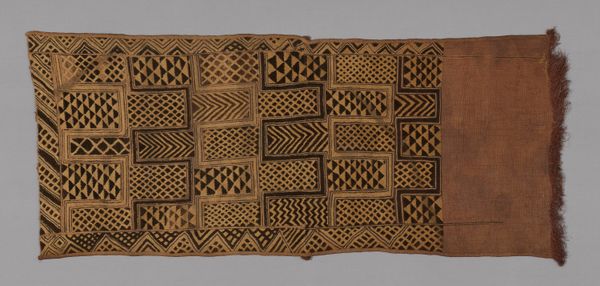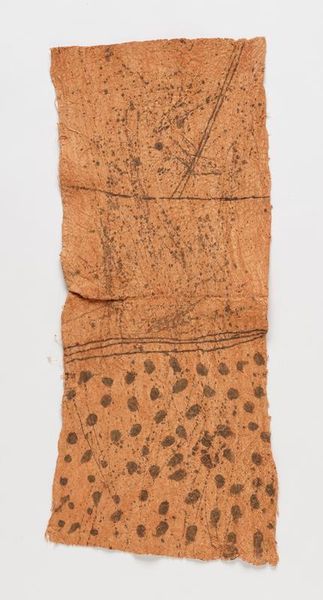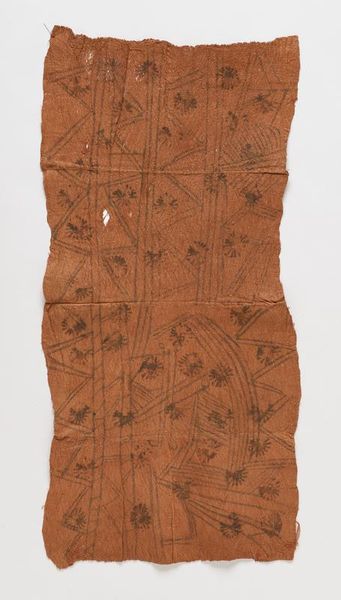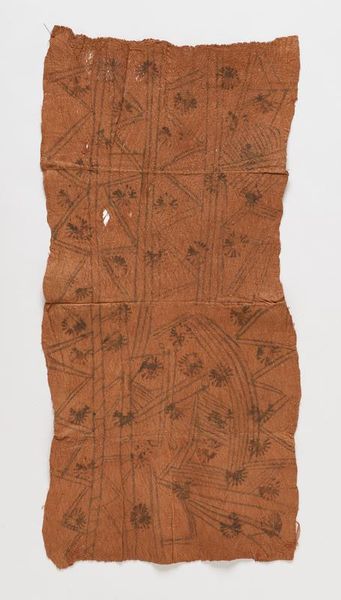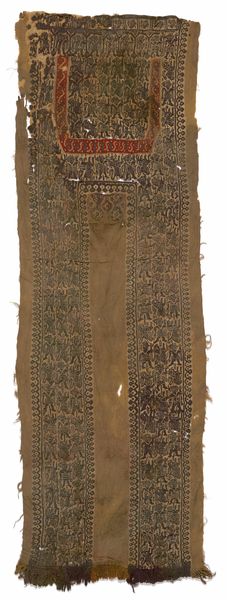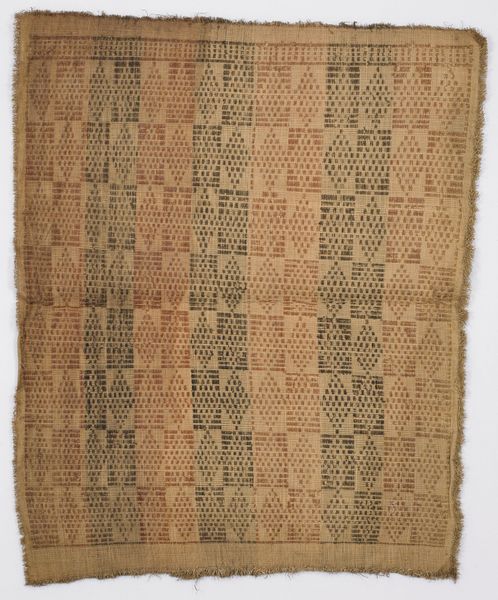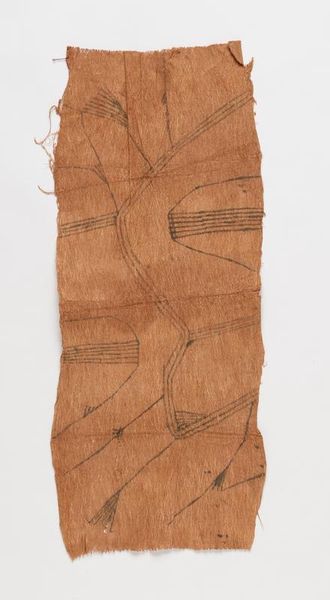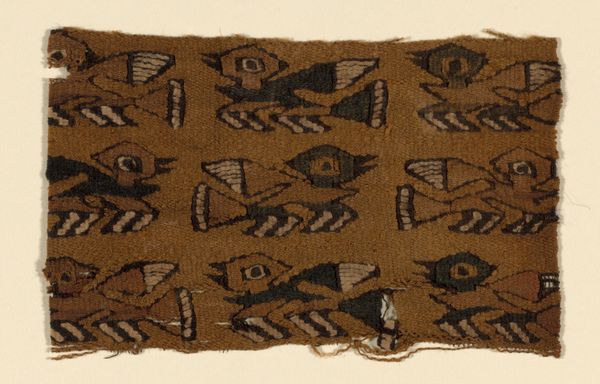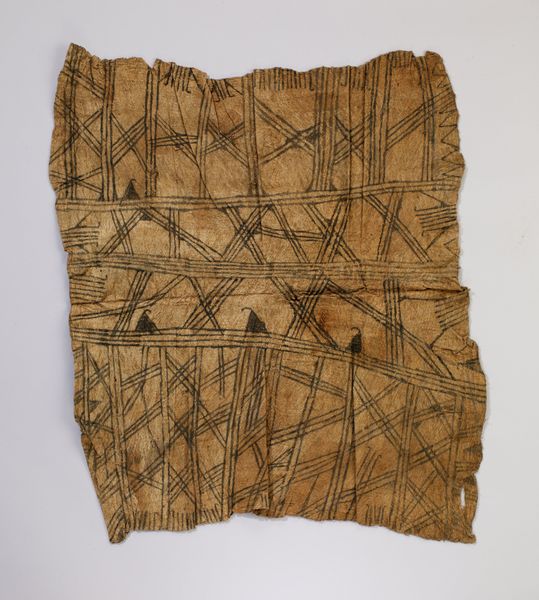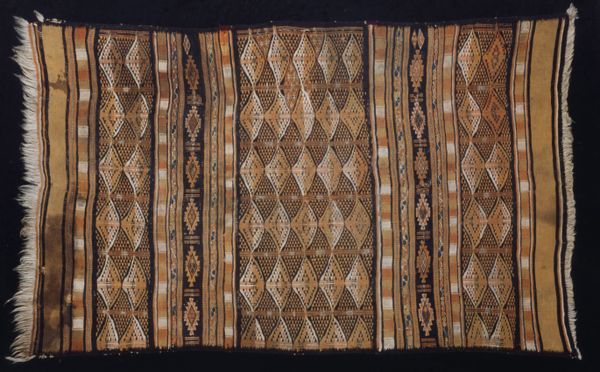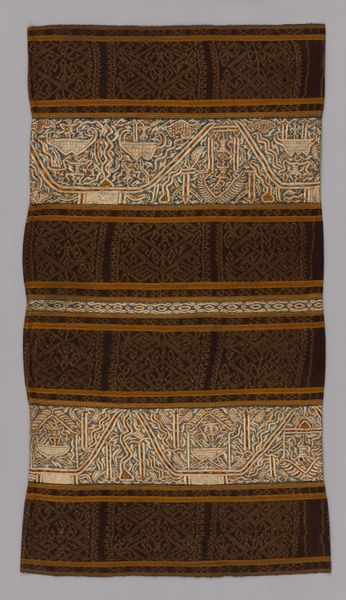
drawing, fibre-art, panel, pigment, textile
#
african-art
#
drawing
#
natural stone pattern
#
fibre-art
#
naturalistic pattern
#
panel
#
pigment
#
pattern
#
textile
#
repetitive shape and pattern
#
organic pattern
#
repetition of pattern
#
pattern repetition
#
textile design
#
imprinted textile
#
layered pattern
#
organic texture
Dimensions: 25 1/4 × 20 in. (64.14 × 50.8 cm)
Copyright: No Known Copyright
Curator: This piece feels immediately grounding, almost like staring at parched earth longing for rain. Editor: You're picking up on something vital. What we have here is a barkcloth panel created by the Mbuti people around the mid-20th century. It's part of the collection here at the Minneapolis Institute of Art. Pigment on tree bark—quite primal, wouldn’t you say? Curator: Primal is perfect. And it strikes me as intensely personal. The way the geometric shapes repeat—the squares bisected by those sharp lines—it's rhythmic. Are these patterns specific to the Mbuti? Editor: Absolutely. Barkcloth production and the geometric designs applied to it are integral to Mbuti culture. Traditionally, the women are responsible for decorating the barkcloth, and these aren't just decorative patterns; they carry layers of meaning. Some scholars suggest that certain designs can reference elements of their rainforest environment, perhaps a specific path or the layout of a hunting net. Curator: That’s wild. So it’s like a coded language hidden in plain sight. I'm suddenly seeing maps, journeys. Is the imperfection part of its power? You know, how it isn't a perfectly uniform textile. The barkcloth is a reminder of the touch, of hands. Editor: The intentionality in these "imperfections" underscores a fascinating tension between the human and natural world that the Mbuti skillfully negotiate. By transforming this raw material—bark—through techniques of painting and design, the patterns likely resonated deeply, connecting individuals both to nature and to their place within their own society. Curator: I love how something so ostensibly simple speaks to such vastness. Now, when I look, I feel the breath of the rainforest and hear the whispers of a whole community. It’s incredible how the smallest gestures, rendered with devotion, bloom into such meaning. Editor: Yes, this piece really underscores how artistic traditions create connections – linking individuals, the community and their ecological environment, even over distances of time and space. The life in these patterns remains.
Comments
minneapolisinstituteofart almost 2 years ago
⋮
To make barkcloth, a traditional form of clothing, Mbuti men collect pieces of the inner bark of fig trees, ranging in color from white to reddish brown, and pound them until they are thin and pliable. Mbuti women decorate the surfaces with intricate designs, using twigs and their fingers to apply dyes made from plant saps and charcoal powder. This particular example shows additional embellishment. Notice the stitching on the surface and along the edges, whose motifs mirror the painted decorations.
Join the conversation
Join millions of artists and users on Artera today and experience the ultimate creative platform.
